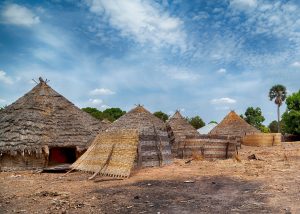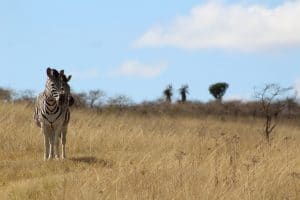Legal analysis of the community-based natural resource management principles in South African Development Community framework
by Chiedza Machaka
In the previous article in this series, I discussed the legal support for community-based natural resource management (CBNRM) that is derived from various Protocols by the African Union. In this article, I zone in on the African region where the practice of CBNRM is most entrenched and offer a legal analysis of various Southern African Development Community (SADC) Protocols, to ascertain whether these Protocols recognise and promote CBNRM.
For conservation communities that seek to sustainably use, control, manage and benefit from their natural resources within the SADC region, there is substantial legal support for their rights to do so – as well as to promote their current programmes and CBNRM across Southern Africa.
CBNRM is a bottom-up approach that can be applied as a climate adaptation mechanism to foster climate resilience through the application of indigenous and knowledge in natural resource and wildlife management. The SADC Protocol on Wildlife Conservation and Law Enforcement (simply known as SADC Protocol on Wildlife), which was promulgated in 1999, includes three clauses relating to CBNRM.
Article 4(2)(g) and articles 7(4) and 7(8) obligate state parties to facilitate, support, establish or introduce community-based conservation, wildlife management and natural resource management practices. Article 7(8) specifically recognises the important role played by rural communities in the conservation and sustainable use of wildlife. Article 7(4) further emphasises the need to “integrate principles, and techniques derived from indigenous knowledge systems into national wildlife management and law enforcement policies and procedures.” Taken together, indigenous and local rural communities may rely on articles 4 and 7 to ensure that CBNRM is part of national wildlife management practices in SADC.
CBNRM includes both plants and animals, and the SADC Protocol on Forestry of 2002 recognises communities’ participation and management of plant resources. Article 3(2)(g) recognises the rights of communities to participate in “forest policies, development, planning and management”. Article 16 focuses on forest-related knowledge and article 17 on genetic resources. In terms of these articles, states are obligated to ensure that communities benefit from the use of their knowledge and resources in an equitable manner.
In the SADC Protocol on the Development of Tourism (1998), communities are recognised as “providers of goods and services to the tourism sector”, which therefore requires member states to ensure that local communities “are involved and benefit from the development of tourism” (Article 12(c)). CBNRM is a key means of achieving this for communities living near or within areas of high tourism potential.
Going beyond plants and animals, the Revised SADC Protocol on Shared Watercourses (2000) places an obligation on state parties in article 3(3) “to respect the existing rules of customary or general international law relating to the utilisation and the management of the resources of shared watercourses”. Customary laws are created and maintained by communities living around these watercourses.
Finally, the SADC Protocol on Environmental Management for Sustainable Development (2014) in article 19(2)(c) provides for “the inclusion and application of indigenous knowledge systems and structures in decision making” relating to the sustainable use of the environment and natural resources.
There is thus substantial support in the SADC Protocols for the practice of CBNRM among communities living in Africa’s common lands. Member states of the Southern African Development Community must ensure: (a) recognition of the rights of communities to be consulted in a culturally appropriate manner; (b) allow communities to establish areas for conservation and use of natural resources; (c) introduce measures pertaining to community-based wildlife management, and (d) include recognition for the application of indigenous knowledge systems and structures in relation to decision making.
While the provisions in various SADC protocols recognise and promote the rights of communities to manage their natural and wildlife resources, communities within Southern Africa largely do not have access to information pertaining to these Protocols and how they can exercise their rights with them. As a result, civil society groups, government and private entities that work with local communities need to engage the communities and educate them on the various SADC Protocols that support the devolution of natural and wildlife resource rights to local communities. To ensure that the communities are legally empowered to defend their rights to sustainably use and manage their plant and animal resources.

About the author
Chiedza Lucia Amanda Machaka holds a Bachelor of Laws from the University of the Witwatersrand, a Master of Laws in Environmental Law and Governance from North-West University and a Doctor of Laws in International Aspects of Law focusing on Environmental law from North-West University. Her research specialisations and interests are on the law governing communities living in and adjacent to state protected areas, indigenous peoples rights, social-ecological resilience and climate change. Prior to joining Resource Africa, Chiedza worked as a volunteer legal assistant at Ditshwanelo the Botswana Centre for Human Rights, a Project Coordinator for the Freedom of Expression and Access to Information program at the Centre for Human Rights at the University of Pretoria, a legal intern at Greenpeace Africa and a freelance researcher for Executive Research Associates



